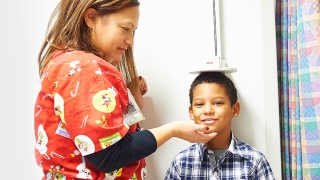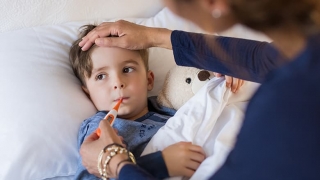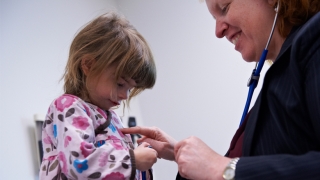Signs of Respiratory Distress in Children
Learning the signs of respiratory distress in children
Children having difficulty breathing often show signs that they are not getting enough oxygen, indicating respiratory distress. This is a list of some of the signs that may indicate that your child is not getting enough oxygen. It is important to learn the signs of respiratory distress to know how to respond appropriately:
- Breathing rate. An increase in the number of breaths per minute may indicate that a person is having trouble breathing or not getting enough oxygen.
- Increased heart rate. Low oxygen levels may cause an increase in heart rate.
- Color changes. A bluish color seen around the mouth, on the inside of the lips, or on the fingernails may occur when a person is not getting as much oxygen as needed. The color of the skin may also appear pale or gray.
- Grunting. A grunting sound can be heard each time the person exhales. This grunting is the body's way of trying to keep air in the lungs so they will stay open.
- Nose flaring. The openings of the nose spreading open while breathing may indicate that a person is having to work harder to breathe.
- Retractions. The chest appears to sink in just below the neck and/or under the breastbone and/or in between the ribs with each breath — one way of trying to bring more air into the lungs.
- Sweating. There may be increased sweat on the head, but the skin does not feel warm to the touch. More often, the skin may feel cool or clammy. This may happen when the breathing rate is very fast.
- Wheezing. A tight, whistling or musical sound heard with each breath may indicate that the air passages may be smaller, making it more difficult to breathe.
- Stridor. A sound heard in the upper airway when the child breathes in.
- Accessory muscle use. The muscles of the neck appear to be moving or your child's head is bobbing up and down when breathing in.
- Changes in alertness. Low oxygen levels may cause your child to act more tired and may indicate respiratory fatigue.
The signs of respiratory distress may resemble other problems or medical conditions. Always consult your child's primary care provider for any of these signs or concerns of breathing difficulties.
If you're unsure of where to start, try our symptom checker to help you determine if a healthcare visit is needed and what steps you can take to relieve symptoms at home.
Many childhood illnesses that lead to breathing difficulties are actually preventable. Talk with your pediatrician to make sure your child is up-to-date on vaccines, such as for influenza, pertussis and pneumococcus, and preventative medicines, such as the RSV monoclonal antibody, before your child is ill.
Reviewed by Rochelle C. Teachey, MD, Lori Handy, MD, MSCE , Kathleen Filograna, MD, FAAP




